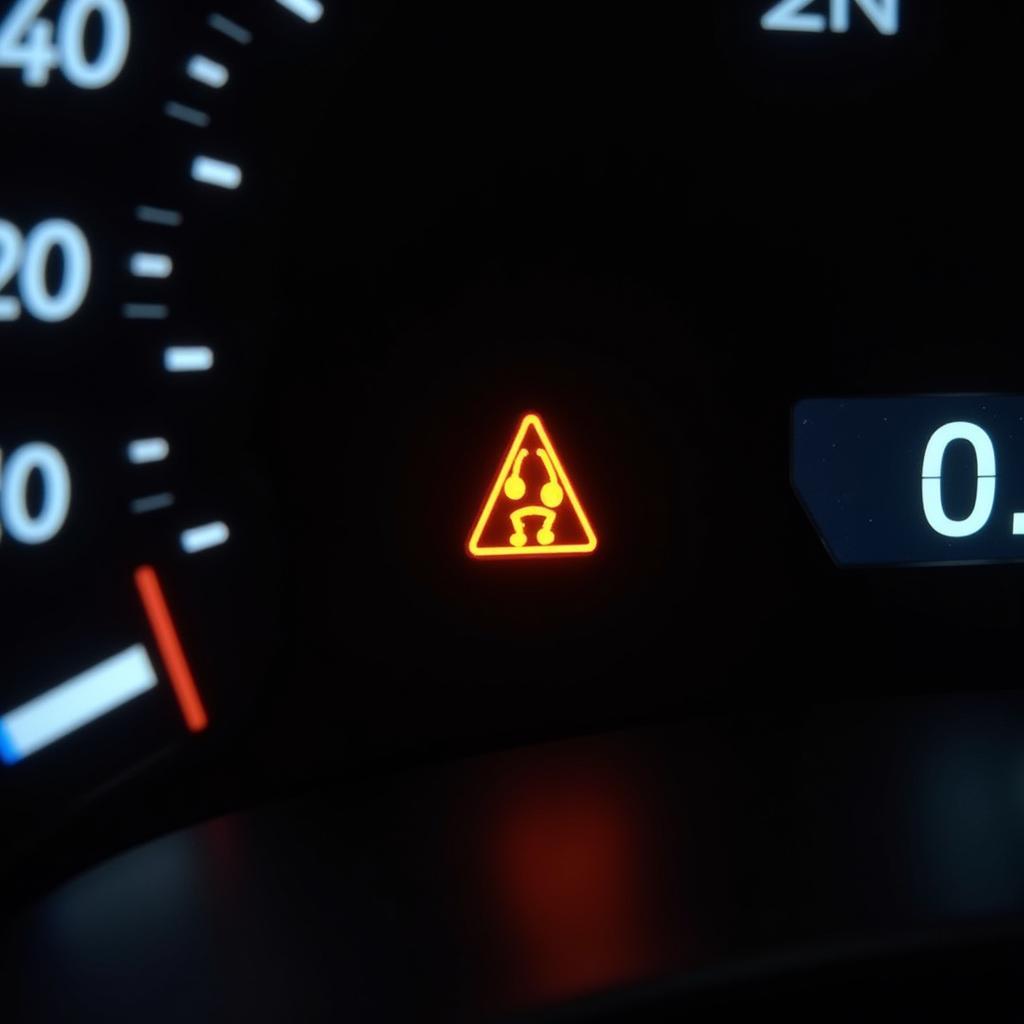A glowing brake warning light on your 2013 Ford Escape dashboard can be a nerve-wracking experience. While it’s designed to alert you of potential braking system issues, understanding the specific cause can sometimes feel like deciphering a complex code. This comprehensive guide will illuminate the common culprits behind a 2013 Ford Escape brake warning light, guide you through troubleshooting steps, and provide solutions to get you back on the road safely.
 Ford Escape Brake Warning Light Dashboard
Ford Escape Brake Warning Light Dashboard
Understanding Your Ford Escape’s Brake Warning System
Your Ford Escape employs a sophisticated braking system designed to ensure your safety. The brake warning light acts as a crucial communication channel between this system and you, the driver. When illuminated, it signals that a component within the braking system requires attention.
Common Triggers for the Brake Warning Light:
- Low Brake Fluid: Brake fluid is the lifeblood of your braking system. A drop in fluid level often indicates a leak, potentially compromising braking performance.
- Worn Brake Pads: Brake pads naturally wear down over time. The warning light serves as a reminder that it’s time for a replacement.
- Faulty Brake Light Switch: This switch activates your brake lights when you press the pedal. A malfunction can disrupt this signal, causing the warning light to illuminate.
- ABS Issue: Your Anti-lock Braking System (ABS) prevents wheel lockup during hard braking. An issue within this system, such as a faulty sensor, can trigger the warning light.
- Parking Brake Engaged: While seemingly obvious, accidentally leaving the parking brake partially engaged is a common culprit behind an illuminated brake warning light.
 Checking Brake Fluid Level in Ford Escape
Checking Brake Fluid Level in Ford Escape
Troubleshooting the Brake Warning Light
Before you panic, remember that a glowing warning light doesn’t always signify a catastrophic failure. It’s crucial to approach the situation methodically. Here’s a step-by-step guide:
- Check Your Parking Brake: Ensure the parking brake is fully disengaged. A partially engaged brake can trigger the warning light.
- Inspect Brake Fluid Level: Locate the brake fluid reservoir under the hood. If the fluid level is low, add the recommended brake fluid type specified in your owner’s manual.
- Visually Examine Brake Pads: If possible, take a look at your brake pads through the wheel spokes. Excessively thin pads warrant a trip to a mechanic.
- Listen for Unusual Sounds: Pay attention to any scraping or grinding noises while braking, which can indicate severely worn brake pads.
- Note Braking Performance: Observe any changes in brake pedal feel, such as sponginess or a need to press further than usual.
“It’s important to note that if you’re uncomfortable performing any of these checks, it’s always best to err on the side of caution and consult a qualified mechanic.” – John Miller, ASE Certified Master Technician
 Mechanic Inspecting Ford Escape Brakes
Mechanic Inspecting Ford Escape Brakes
Seeking Professional Help
If your initial troubleshooting doesn’t pinpoint the cause, or if you’re uncomfortable delving deeper, seeking professional assistance is crucial. A qualified mechanic possesses the expertise, tools, and diagnostic equipment to accurately diagnose and repair complex brake system issues.
Remember, a properly functioning braking system is paramount to your safety and the safety of others on the road. Never delay addressing a brake warning light. Early detection and prompt repair can prevent potentially dangerous situations.

